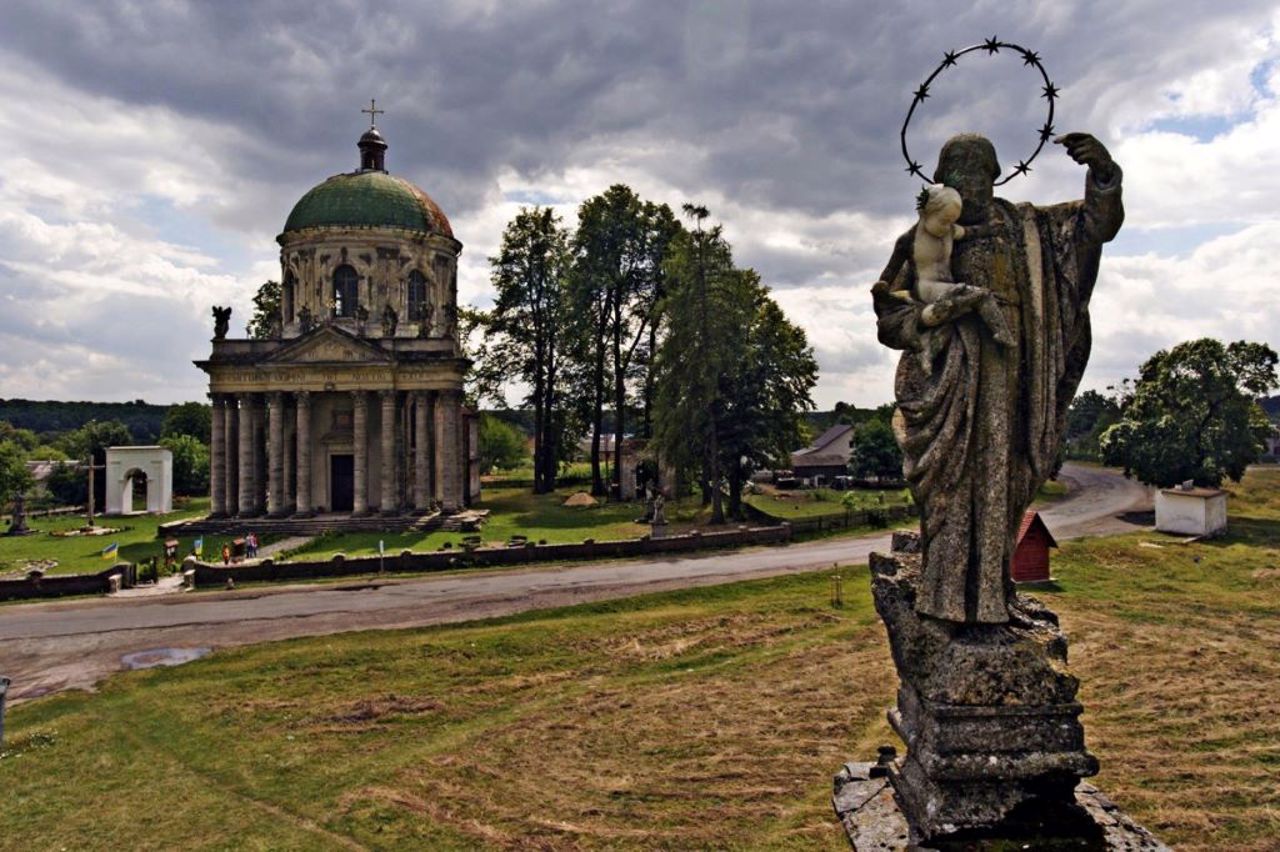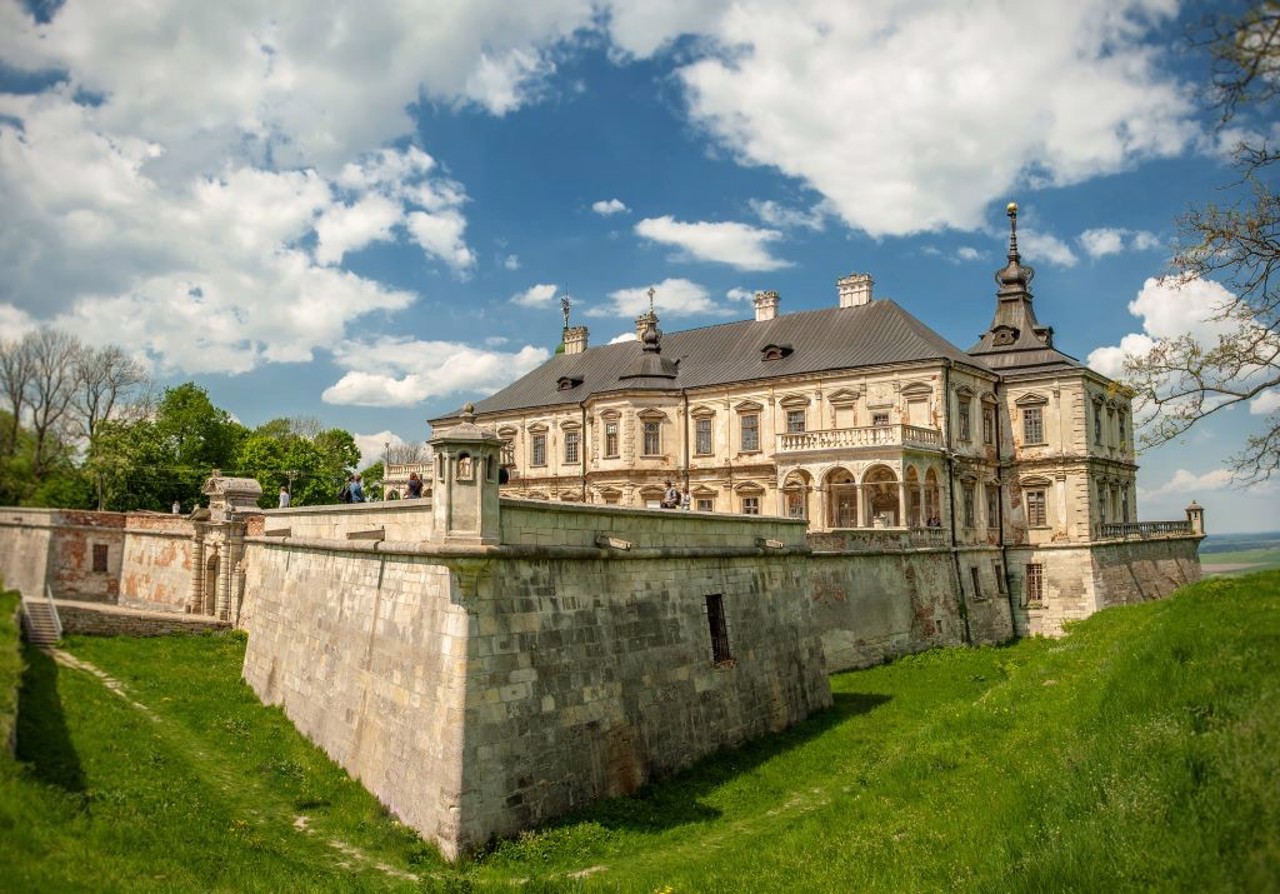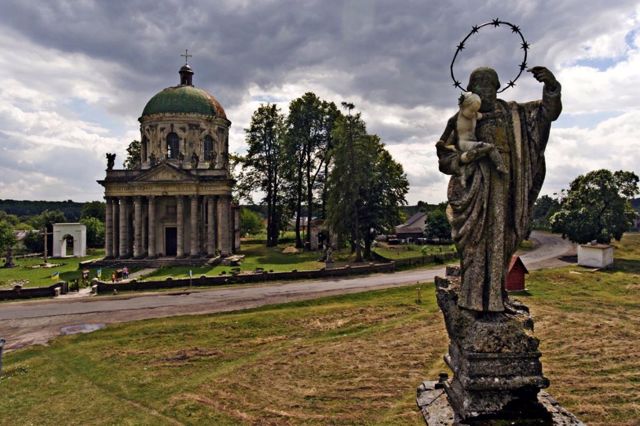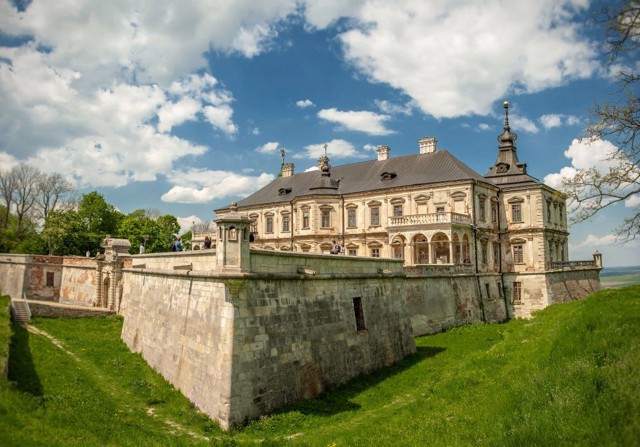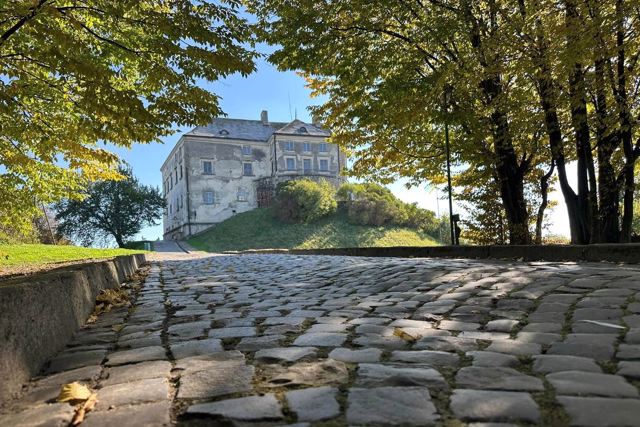Functional temporarily unavailable
General information about Pidhirtsi
The small village of Pidhirtsi is located on the hills of the Voronyaky lowlands next to the M-06 (E-50) "Kyiv-Chop" highway between Lviv and Rivne.
The village is famous for the fact that it is home to the most luxurious "Golden Horseshoe" castle in Lviv Region. It is located on the northern outskirts of the ancient Rus settlement of Plisnesk (VI-XIII centuries), mentioned in the "Word about Ihor's Regiment" (the ramparts were preserved further south, where the Annunciation Basilian Monastery of the XVII century is now located).
In the 15th century, these lands were owned by Ivan (Yanush) Pidhoretskyi. In 1635-1640, Crown Hetman Stanislav Konietspolsky built a new castle-fortress on the site of the old fortifications, which became a unique ...
The small village of Pidhirtsi is located on the hills of the Voronyaky lowlands next to the M-06 (E-50) "Kyiv-Chop" highway between Lviv and Rivne.
The village is famous for the fact that it is home to the most luxurious "Golden Horseshoe" castle in Lviv Region. It is located on the northern outskirts of the ancient Rus settlement of Plisnesk (VI-XIII centuries), mentioned in the "Word about Ihor's Regiment" (the ramparts were preserved further south, where the Annunciation Basilian Monastery of the XVII century is now located).
In the 15th century, these lands were owned by Ivan (Yanush) Pidhoretskyi. In 1635-1640, Crown Hetman Stanislav Konietspolsky built a new castle-fortress on the site of the old fortifications, which became a unique example of the transition from defensive to palace architecture. In the 18th century, the new owners from the Rzhevusky family reconstructed the castle in a more luxurious form, collected a collection of valuable paintings, furniture and weapons, built opposite the church of Saint Joseph and the Ascension, which resembles the Roman cathedral of Saint Peter.
Built before Versailles and the Petropalace, the castle was considered the most beautiful in Europe, it was visited by kings and emperors. The last owner from the Sangushko family took the museum collection to Brazil.
During the German occupation, the palace housed a military hospital, and in Soviet times there was a tuberculosis sanatorium.
Restoration is currently underway.
Невелике село Підгірці розташоване на пагорбах низькогір'я Вороняки поруч з трасою М-06 (Е-50) "Київ-Чоп" між Львовом і Рівним.
Село відоме завдяки тому, що тут знаходиться найрозкішніший замок "Золотої підкови" Львівщини. Він розташований на північній околиці городища давньоруського Пліснеська (VI-XIII столітя), згадуваного в "Слові о полку Ігоревім" (вали збереглися південніше, де зараз знаходиться Благовіщенський василіанський монастир XVII століття).
У XV столітті цими землями володів Іван (Януш) Підгорецький. У 1635-1640 роках коронний гетьман Станіслав Конєцпольський звів на місці старих укріплень новий замок-фортецю, який став унікальним зразком переходу від оборонної до палацової архітектури. Нові власники з роду Ржевуських в XVIII с ...
Невелике село Підгірці розташоване на пагорбах низькогір'я Вороняки поруч з трасою М-06 (Е-50) "Київ-Чоп" між Львовом і Рівним.
Село відоме завдяки тому, що тут знаходиться найрозкішніший замок "Золотої підкови" Львівщини. Він розташований на північній околиці городища давньоруського Пліснеська (VI-XIII столітя), згадуваного в "Слові о полку Ігоревім" (вали збереглися південніше, де зараз знаходиться Благовіщенський василіанський монастир XVII століття).
У XV столітті цими землями володів Іван (Януш) Підгорецький. У 1635-1640 роках коронний гетьман Станіслав Конєцпольський звів на місці старих укріплень новий замок-фортецю, який став унікальним зразком переходу від оборонної до палацової архітектури. Нові власники з роду Ржевуських в XVIII столітті реконструювали замок в більш розкішному вигляді, зібрали колекцію цінних картин, меблів і зброї, звели навпроти костел Святого Йосипа і Вознесіння, що нагадує формами римський собор Святого Петра.
Побудований до Версаля і Петропалацу замок вважався найкрасивішим в Європі, його відвідували королі та імператори. Останній господар з роду Сангушків вивіз музейну колекцію в Бразилію.
Під час німецької окупації в палаці розміщувався військовий госпіталь, а в радянські часи тут був туберкульозний санаторій.
В даний час ведеться реставрація.
Сплануй своє перебування у Pidhirtsi
What to see and where to go in Pidhirtsi
Tourist attractions and museums of Pidhirtsi
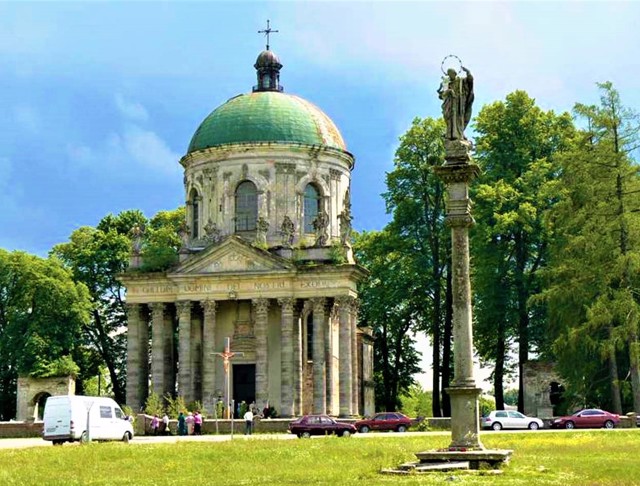
Exaltation of Holy Cross and Saint Joseph Church
Temple , Architecture
The Roman Catholic Church of the Exaltation of the Holy Cross and Saint Joseph the Betrothed was built according to the project of the engineer Karol Romanus as a temple-tomb of the Rzevuskyi family (according to one version, the author of the project was Prince Vaclav Rzevuskyi himself).
Made in the Baroque style in the form of a rotunda, to which a 300-meter linden alley leads from the Pidhirtsi Castle. Figures of the Mother of God and Saint Joseph on columns are installed in front of the church. The main facade is decorated with a portico of 14 columns of the Corinthian order, on the attic of which 8 sculptures of saints by Fessinger and Leblas were installed (one of them was destroyed during the Second World War).
The interior of the Exaltation of Holy Cross Church has preserved frescoes by Lukash Smuhlevych and several Galician masters.
Since 1861, the temple was a parish church, in 1945 it was closed by the Soviet authorities. Currently, the church is under restoration, but you can get inside during services held by the Greek Catholic parish of the Church of the Blessed Mykola Charnetskyi and the New Martyrs of the Ukrainian Greek Catholic Church.
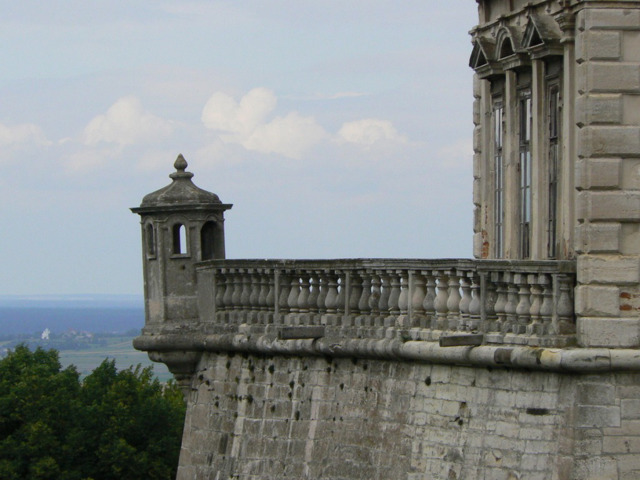
Pidhirtsi Castle Museum-Reserve
Palace / manor , Architecture , Museum / gallery
Pidhirtsi Castle is the most beautiful castle of the "Golden Horseshoe of Lviv Region", a vivid example of the transition from defensive to palatial architecture of noble residences of the Renaissance era.
It was built according to the project of the Italian architect Andrea del Aqua and the military engineer Guillaume de Beauplan (author of the famous "Description of Ukraine" and compiler of the "General Map of Ukraine") for the Crown Hetman Stanisław Koniecpolski on the northern outskirts of the ancient Rus Plisnesko Hillfort.
It was one of the most beautiful palaces on the territory of Eastern Europe, embodying the fashionable type of aristocratic residence at the time, which combined luxurious housing with bastion fortifications (the so-called palazzo in fortezza).
After the War of Liberation, the Sobieskis, who owned the castle since 1648, restored the palace and decorated the interiors. Grand balls were held here with the participation of European monarchs. The Russian Tsar Peter I, who visited here in 1711, took several sculptures by Italian masters to St. Petersburg and soon began the construction of the Petropalace. In 1728-1779, the new owner of Pidhirtsi, Wacław Rzewuski, carried out a large-scale reconstruction of the castle, began collecting a collection of sculptures and paintings, and also organized a private theater. At that time, Pidhirtsi became famous as the "Galician Versailles".
The last owners - princes Sanguszko - turned their residence into a museum, but at the beginning of the First World War they had to save the collection. In 1939, Roman Sanguszko took a rich collection of works of art to Brazil and created the Sanguszko Foundation, which is managed by his descendants.
During Soviet times, the palace was looted, the interiors were destroyed by fire, and a tuberculosis sanatorium was placed in the premises. In the Soviet TV series "D'Artagnan and the Three Musketeers", Pidhirtsi Castle played the role of the city hall, where a ball was held for the city elders, where a brave Gascon delivered the queen's diamond pendants (many believe that it was the Louvre or Versailles).
Now the Pidhirtsi Castle Museum-Reserve is a branch of the Lviv National Art Gallery. Since 1997, restoration and creation of a museum has been underway. A courtyard with a well, a terrace on the bastions, an exhibition of old photographs in the casemates, as well as the dungeon of the castle with the "White Lady" exhibition, which is dedicated to the legend of the ghost of the Pidhirtsi castle, are open to visitors.
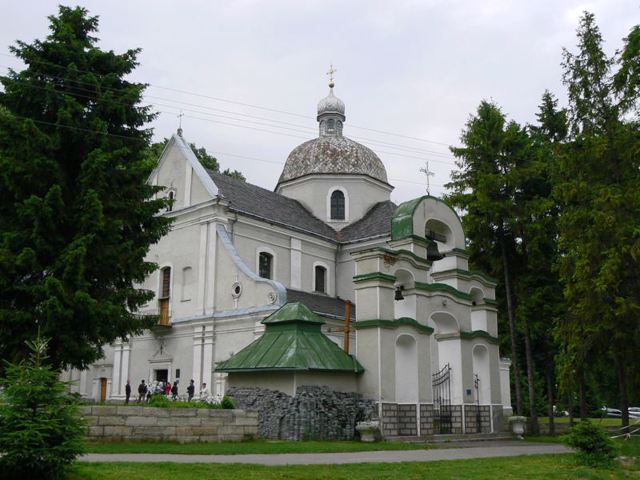
Annunciation of Blessed Virgin Mary Monastery
Historic area , Temple , Architecture
The Annunciation Basilian Monastery in Pidhirtsi, or simply the Pidhirtsi Monastery, was founded in the 17th century on the hill on which the ancient Rus city of Plisnesk (10th-13th centuries) stood during the early Middle Ages.
Back in 1180, Princess Olena, daughter of Prince Vsevolod of Belz, founded the first monastery at this place. The defensive ramparts of the hillfort have been partially preserved around. The baroque Saint Onufriy church with a sundial on the facade was built in 1750. A magnificent three-dimensional iconostasis with sculptures by Pavlo Hizhytskyi has been preserved.
In 1861, the first memorial service for the death of Taras Shevchenko in the western Ukrainian lands was held here.
Now the complex belongs to the Greek Catholic Church. The full name of the monastery is the Monastery of the Annunciation of the Blessed Virgin Mary of the rank of Saint Basil the Great.
Excavations are underway on the site of an ancient Rus temple.
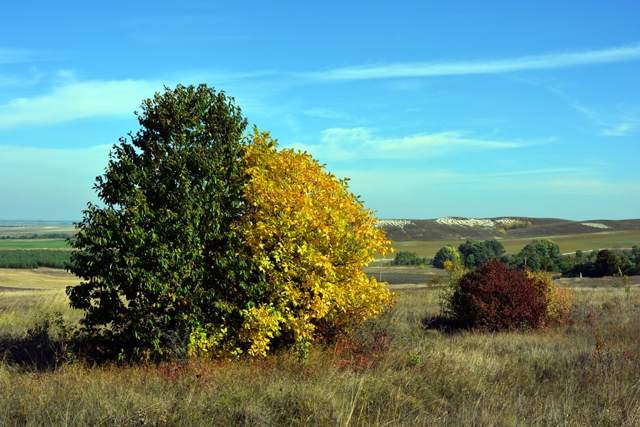
Northern Podillya National Nature Park
Reserve
National Nature Park "Northern Podillya" was created in 2012 on the territory of 15.5 thousand hectares within Zolochiv district of Lviv region with the aim of preserving valuable natural and historical and cultural complexes and objects of Northern Podillya.
White (Bila) Mountain is interesting, on which steppe vegetation has been preserved in combination with a beech-hornbeam forest. It offers views of the plains of Small (Male) Polissya, the Hologora hills and the medieval Olesko Castle. Also on the territory of the national park are the Zolochiv and Pidhirtsi castles, the Basilian monastery on the ancient Rus hillfort and other historical monuments.
On Mount Menych there are outcrops of Torton sandstones - a geological monument of nature of local importance. On the territory of the "Trinoha" geological and botanical natural monument, among the greenery of the forest on the top of the mountain, you can see rocks of the most demanding forms of weathering.
At the source of the Zakhidny Buh, one of the largest rivers in Ukraine, the international ecological ethno-festival "Clean Springs of the Buh" takes place every year.
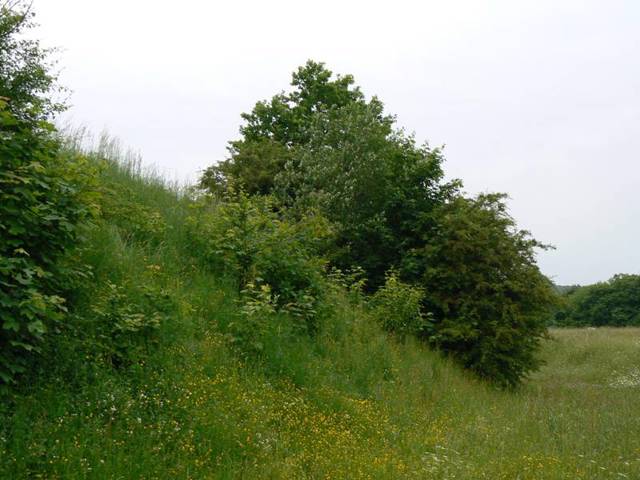
Plisnesko Hillfort
Historic area , Archaeological site
The Plisnesko Hillfort is the ramparts and defensive ditches of the historic city of Plisnesk, which existed from the 7th to the 13th centuries on the border of Halychyna and Volyn.
This trade and craft city had the right to self-government for a long time. Its territory, together with the post and suburbs, occupied almost 160 hectares.
The builders used the natural features of the high plateau, constructing a very complex and difficult-to-reach defense system of seven defensive lines. However, in 1241, the city was completely destroyed by the troops of Khan Batiy and has not been rebuilt since then.
Later, the Pidhirtsi Monastery was founded on its territory.
In 2015, the historical and cultural reserve "Ancient Plisnesk" was created.
Pidhirtsi on photo and video
Reviews Pidhirtsi
Geographical information about Pidhirtsi
| {{itemKey}} | {{itemValue}} |
|---|---|
| Region |
Lviv |
